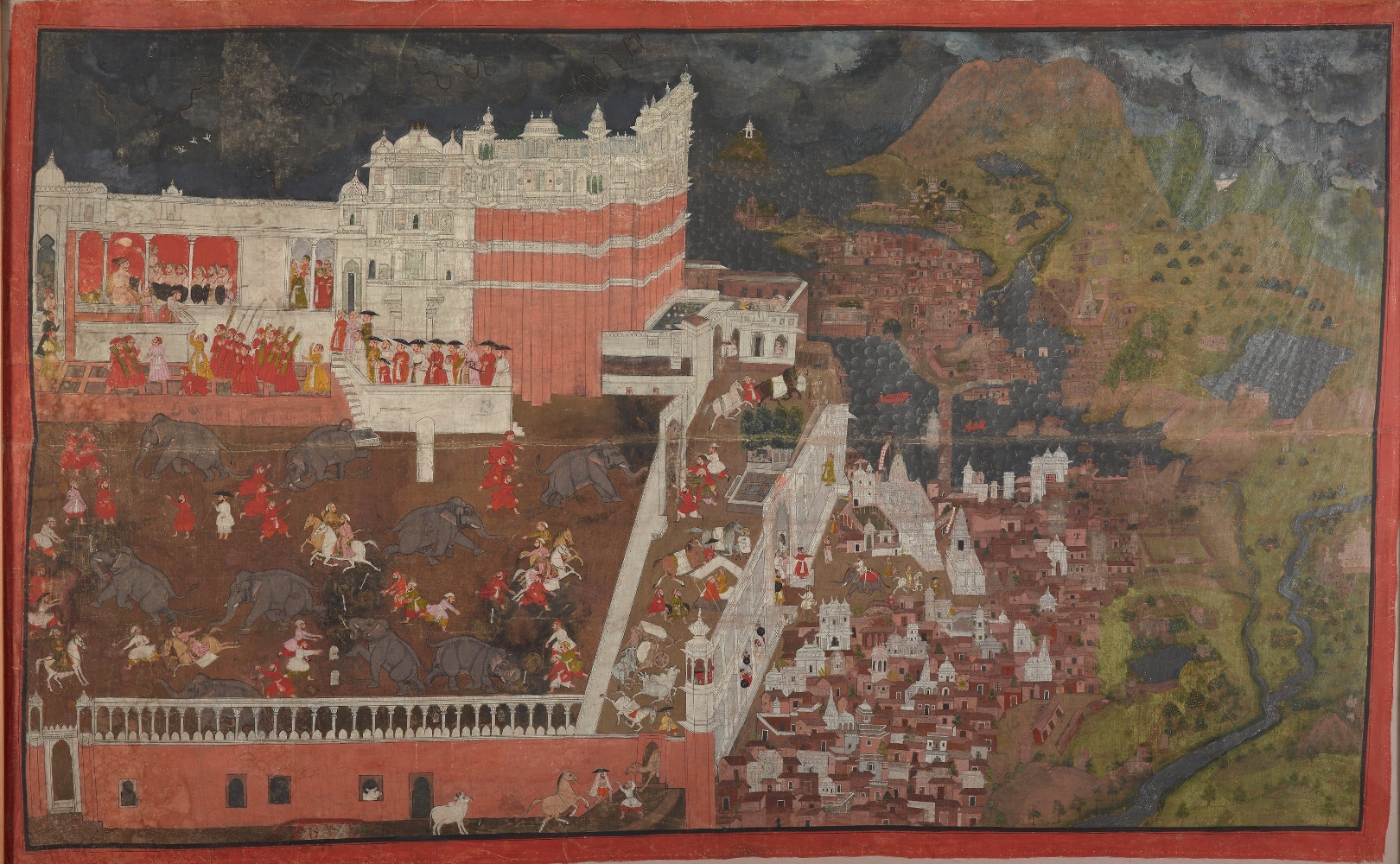Mughal Portraits and British Landscapes. Art history tells the story about the introduction of portraiture and landscape painting to South Asia via a history of its empires. Though scholars have considered portraiture, objects and ideas that shaped the imagining of place and landscape remain largely unexplored. By the early eighteenth century, Udaipur in Northwestern India was at the center of pioneering material and pictorial experiments in presenting the sensorial, embodied experience of space.
“Feeling of a Space”: An Art History of Praise and Place in Eighteenth-Century India
Dipti Khera (Art Histories Fellow 2015/16)
Forum Transregionale Studien, Wallotstr. 14, 14193 Berlin

A wide range of objects, from large-scale court paintings, three to five feet long, to painted invitation letter-scrolls up to seventy-two-feet long, formed representations of Udaipur’s lands, lakes and bazaars as well as Northern India’s prominent temples in Banaras and British durbars in Ajmer. These objects demanded audiences to make emotional connections of belonging to and longing for real places in the present, and in imagined ideal times. Moving beyond a valuation of art and aesthetic practices predicated on their mimetic merit, Udaipur’s painters, poets, scribes and travelers offered bhava of a space – feeling of a space – as a rich, layered category. Generating bhava, emotions and moods, in visual and literary arts was foundational to the theory of Indian aesthetics, yet its connection with pictorial practice was hardly straightforward. Udaipur’s creation of persistent relations between affective phenomenon and efficacious desires, art and knowledge, and politics and aesthetics calls upon us to imagine – distinct from colonial and nationalist accounts of political and cultural decadence – an art history of praise and place in eighteenth-century India and beyond.
Dipti Khera is assistant professor in the Department of Art History and Institute of Fine Arts at New York University. She is presently writing a book and developing an exhibition with the Arthur M. Freer and Sackler Galleries, Washington, DC and the City Palace Museum, Udaipur, that reveal the major shift in Indian art represented by Udaipur painters' engagement with conceptualizing place, representing reality, and imagining territoriality. Recent publications that draw upon this project include Jagvilasa: Picturing Worlds of Pleasure and Power in Eighteenth-Century Udaipur Painting in A Magic World: New Visions of Indian Painting (December 2016, forthcoming) and Marginal, Mobile, Multilayered: Painted Invitation Letters as Bazaar Objects in Early Modern India (Journal 18, 2016).

